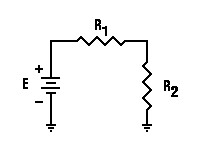this weekend i've been working with gabriel on giant high heel shoe puppets he was commissioned to build for the new orleans mardi gras muses parade that occurs the thursday before mardi gras. they will be paraded along with our electric butterfly puppets.
each puppet has about 80 feet of electroluminescent wire (from coolight) and i'm in charge of making it all work. our original puppets used ten AA batteries each to power a small computer that animates the light-wire, and while this worked and meant we didn't have to fiddle with finicky recharchables, i've felt awful about consuming so many batteries for each performance (120 each time!). for the new puppets we've employed rechargable batteries, which have improved a great deal since we started doing this. the rechargeables offer better performance (more power at more stable voltage) but they do have the problem that if you discharge them too far they can get very hot and catch fire.
so, i've spent the day figuring out how to prevent them from overdischarging. not being an electrical engineer and not finding anything for sale on the web to handle this, i've had to resort to guerilla tactics and build my own circuits. this has plunged me deep into an old haunt: analog electronics, ohm's law and big thick catalogs filled with dense tables of component properties. luckily, a hobbyist who flies battery-powered model planes posted a solution to the battery problem that i've been able to adapt to our high heel shoes.
(geek content warning) the solution is simple, elegant and tickles my geek fancy because it uses just three components: a relay, a resistor and a pushbutton. these three go between the battery and the sequencer. they're wired so that when you press the pushbutton electricity is supplied to the relay's coil causing its contacts to connect the battery to the light-wire and the show starts. upon releasing the pushbutton electricity continues to keep the relay's coil energized but through a resistor whose resistance is chosen so that when the batteries reach their maximum safe discharge the voltage supplied to the relay's coil will fail to keep the relay switch closed and the battery will be disconnected. i'll know if it works tuesday when the parts arrive.

2 comments:
Hey Matt. Sounds amazing--wish I could be there with you guys. Hugs to you and everyone. Can't wait to see pictures.
omg... i am so glad there are people out there who get excited, really viscerally excited, about "analog electronics, ohm's law and big thick catalogs filled with dense tables of component properties"...
cause if yall didnt, well, i guess there would be no electric lights, or blenders, or even internet porn sites for that matter....
kisses and hugs. --dff
Post a Comment